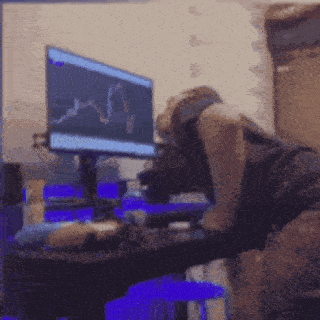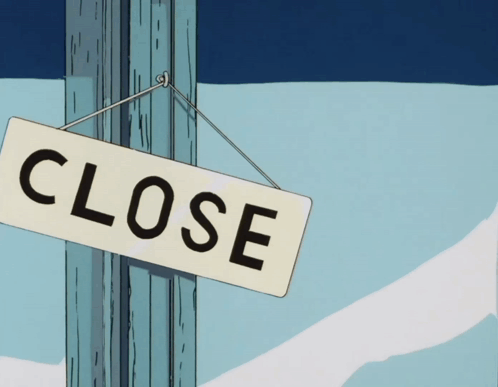Forex trading — that must be the billionth time you’re hearing the phrase. And when you look at all those graphs and candlestick charts, things can get confusing.
But guess what? Forex trading isn’t actually complex. The word forex is simply short for “Foreign Exchange.” It’s also displayed as FX.
You know how a businessman buys and sells goods to make a profit? That’s also how forex trading works. Just that you’re exchanging money for money — different currencies. Of course, every country uses money, and every country has its currency. You can understand why forex trading is popular all around the world and also relevant.
Okay, so what now? Are you ready to learn about the ins and outs of forex trading? Let’s get into it.
Read More: What Are Tokenomics?
What is Forex Trading?
To keep things simple, forex trading is the buying and selling of different currencies. That means, for instance, you buy some US dollars and sell them for Chinese yen. Maybe you grab some European euros and switch them for Nigerian naira, or you get some Russian rubles and swap them for Indian rupees.
Indeed, you’ll find about every currency in the world listed in the forex trading space. The market has up to 39 different currencies with a US$7.5 billion daily turnover as at 2022. That’s a whole lot of cash, you know.
In many ways, forex trading is similar to stock trading. So, if you’re already used to what the financial guys at Wall Street do, you shouldn’t have a hard time with forex. However, the foreign exchange market is far larger than the stock market. Did I mention it’s the largest market in the world?
One reason the currency trading marketplace is huge is that it’s decentralized. That simply means no central authority is in charge of it. Anyone can walk through the forex door and trade.
It’s not just individual traders — banks, governments, institutions, corporations, and other business entities also trade forex. The market doesn’t sleep, either. 24/7, the charts are reading, rates are rising, people are exchanging, and money is making — don’t worry about the grammar.
How Does Forex Trading Work?
Let’s assume US$1 equals C$2. You’re in Canada, traveling to the United States, and there’s C$200 in your pockets. When you reach the US, you exchange your C$200 for US$100:

An hour later, you change your mind and decide to return to Canada. You go to change your US$100 back into Canadian dollars. But US$1 now equals CS$3. That means you’ll get C$300 instead of the C$200 you exchanged earlier. For sure, you’ll cross the border with a CS$100 profit and a smirk like Kevin James:
That’s how forex trading works — except it’s online. As a forex trader, you buy one currency and anticipate that its value will rise relative to another currency. Then, you sell and pocket the profits. That’s why, in the foreign exchange market, you see currency pairs — like USD/CAD, GBP/JPY, YEN/EUR, and so on. Profit comes from the rising or falling currency exchange rates compared to others.
More on Forex Rings: How $2.2 Billion Circumvented China’s Capital Controls via Crypto Trading Platforms
Understanding Forex Transactions
It all sounds simple. You buy a currency, wait for the value to appreciate, and sell. But when you register with a forex broker, you can quickly become overwhelmed with the many currency pairs and fluctuating exchange rates. Then, it’ll look like Einstein-level mathematics.
So, it’s important you grasp the nitty-gritty of trading currencies online. First, note that the foreign exchange market is an over-the-counter (OTC) environment. That means you do business directly with other participants — like yourself.
When making transactions, you’ll come across the bid and ask prices. Suppose you want to buy a currency; the bid price is the amount you can pay. On the other hand, the ask price is the amount the seller wants to receive. There’s usually a difference between the bid and ask prices — which is called the spread in forex language.
How about the graphs and candle charts? Well, they’re not precisely trades you make. They’re simply data. The graphs show you the direction and history of currency exchange rates so you can make better trades.
Risk Management in Forex Trading and Different Forex Trading Strategies
Remember the earlier example where you got C$300 after re-exchanging your US dollars to Canadian dollars? It’s possible that the exchange rate would have gone down to 1:1. If that happens, you’ll get C$100 for your US$100, which means a C$100 loss. How will you feel when you lay on the bed to sleep that night? Like Squidward, surely:
But that’s the reality. Like any other form of trading, the forex market has risks, and losses happen. That’s why risk management is essential. I agree with how this Twitter person puts it:
Now, how do you manage risk in forex trading? Here are some tips:
- Use position sizing. Basically, this involves choosing how much money you want to invest in a trade. If you have US$1,000, and your position size is 2%, you’ll trade with just US$20. Suppose the exchange rate doesn’t smile at you afterward; you won’t lose much.
- Set stop-loss orders. This risk management is similar to the first. You simply specify the point at which you exit a trade if you’re losing.
- Diversify your trades. As a forex broker, it’s not ideal to throw all your money into a trade. Instead, spread it across multiple currency pairs to balance things. This is another area I agree with my Twitter friend:
Forex Trading Strategies
Different forex brokers approach currency trading in different ways. See it this way: you can choose to buy and sell currencies after every one minute, two hours, three days, four weeks, five months, or six years. Disclaimer: Your Forex broker platform can close your account if you trade once every six years:
So, I don’t advise that.
You can also decide to trade when certain activities happen in the market. All these make up different strategies. Here are the common strategies you should know about:
- Scalping: Here, you trade on the smallest of exchange rate changes. So, you can execute a lot of trades per day.
- Day trading: As the name implies, you say goodbye to the forex market before bed. You don’t keep active trades overnight — remember, the market is 24/7.
- Swing trading: With this strategy, you can hold your trading positions for days or weeks. You won’t close until there’s a “swing.” Swings simply mean medium-term market shifts.
- Trend following: This is where you ride with the waves — literally. You spot and follow dominant market trends.
Pros and Cons of Forex Trading
Should you trade forex or not?
Well, you can decide when you know the good and bad side of currency trading. Here’s the good:
- The market is open 24/7, meaning you can trade anytime.
- With billions of dollars in trades daily, the forex market boasts enormous liquidity.
- Opportunity to make high profits with favorable exchange rates and market trends.
- It’s a global market, meaning you can trade from anywhere.
- The market has minimal regulation compared to others — like stocks, for example.
For the bad, this is what you should know:
- There’s high risk and volatility as currency exchange rates can fluctuate anytime and anyhow.
- Getting familiar with forex trading platforms and intricacies can take time.
- It’s easy to make emotional and impulsive decisions with fast-changing exchange rates.
So, which will it be? Trade or no trade? You don’t have to decide right away. Take your time.
Tips for Successful Forex Trading
A Ferrari is a nice car, right? We can both agree. But don’t think you’ll be cruising in one overnight once you start swapping USD for EUR or other currencies.
The foreign exchange market can be profitable in the long run only if you apply the right tips. Check them out below:
- Don’t stop learning. The market is open 24/7, so always stay updated on the news, latest strategies, and other aspects of forex trading.
- Have a detailed trading plan that balances your goals and risks. You should stay disciplined by following your plan.
- Practice currency trading in demo mode before you invest real money.
- Keep emotions away when making trading decisions. The best route is the rational one.
- Be patient. Again, you won’t be driving a Ferrari overnight. Maintain a long-term perspective, and you’ll get better returns.
Conclusion
In forex trading, you buy one currency and exchange it for another when its price increases. That’s where profit lies. But the price may not always rise. If it’s falling, you must sell the currency ASAP to minimize loss.
More Info:
That’s where the risk dwells. As a result, the foreign exchange market is one to approach with caution. Before you start trading, make sure you have a proper knowledge of currency trading.
Disclaimer: All materials on this site are for informational purposes only. None of the material should be interpreted as investment advice. Please note that despite the nature of much of the material created and hosted on this website, HODL.FM is not a financial reference resource and the opinions of authors and other contributors are their own and should not be taken as financial advice. If you require advice of this sort, HODL.FM strongly recommends contacting a qualified industry professional.








